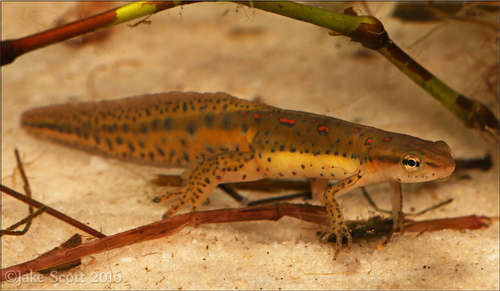
Eastern Newt
The vibrant Eastern Newt transforms during its life, sporting a vivid orange hue as a juvenile eft. Its dual lifestyle, wandering land before returning to water, aids in controlling pests like mosquitoes, highlighting its ecological importance and fascinating life stages.
12-15 years
Lifespan
Least Concern
Conservation Status
Stable
Population Trend
Distribution Range of the Eastern Newt
Notophthalmus viridescens, commonly known as the Eastern Newt, is primarily native to eastern North America. Its geographical distribution ranges from southern Canada through the eastern United States, down to Texas and Florida, and extends westward to the Great Lakes region.
Eastern Newt's Habitat
Environmental Conditions
The Eastern Newt typically inhabits freshwater environments such as ponds, lakes, marshes, and slow-moving streams. These habitats generally have temperate climates with distinct seasonal changes, including warm summers and cold winters. The aquatic environments where they are found are often characterized by clear or slightly turbid water with abundant vegetation and leaf litter.
Ecological Niche
Notophthalmus viridescens occupies a semi-aquatic ecological niche. In its juvenile stage, known as the 'eft' stage, the newt is terrestrial and often found in moist forested areas under leaf litter or logs. As adults, they become primarily aquatic, living in small bodies of water where they feed on a variety of invertebrates, including insects and crustaceans. The species exhibits remarkable adaptability, with the ability to live both in water and on land at different life stages, thus playing a unique role in energy transfer within both terrestrial and aquatic ecosystems.
Copyright @ Nature Style Limited. All Rights Reserved.
 English
English